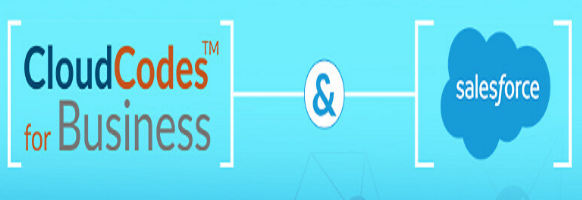An Awareness Guide to Awake Readers With Salesforce Data Security


Salesforce is considered as world’s number one Customer relationship management platform. It benefits organizational customers with a simple online application to handle sales, marketing, sales and other kinds of business operations. Salesforce data management system enables industries to build up a healthy relationship with worldwide customers. Being a cloud-based application, Salesforce data security is a major concern. This post is going to tell readers about the protection measures adopted by Salesforce to offer online information security.
Introduction on Salesforce Data Security
The trust of Salesforce is a customer-facing website, which provides a layout of system performance with security challenges that impact customer’s work. Salesforce works on the concept of shared responsibility model to achieve data privacy and security. It acts like a data processor having regular concern with regulated data like PII and PHI. Salesforce takes the duty of providing physical and technical protection at maximum level.
Note – Customers are responsible to offer security with Salesforce data integrity, usage, and quality, including the type of information being getting stored.
Salesforce has fulfilled the requirements of several rigorous compliance certifications, comprising of:
- Safe Harbor
- SOC 2
- SOC 3
- PCI-DSS
- ISO 27001/27018
The Salesforce’s Government cloud comprises of Sales Cloud, Force.com, Service Close, and Analytics Cloud. Basically, Salesforce contract consists of the clauses, which prohibit Salesforce from using customer profiles or leaking customer record, which is stored in their storage infrastructure. Certain exceptions are present to do this, including the scenario when Salesforce exhibits technical updates. These updates are done for fixing problems or outages or at the time of compelling legal activities to share information with law enforcement agencies.
Built-in Salesforce Data Security Features
By default, several features are offered to the Salesforce account administrator to protect information from external and internal threat.
- Log Auditing – Salesforce data security maintains a track record of all login attempts for last six months, comprising of login attempt’s location and IP address. Administrators can also activate the attribute of history tracking to give in-depth visibility into the field value modifications and the person who performed the alteration.
- Two-Factor Authentication – Administrators can activate the company wise 2-factor authentication for all linked users account. Salesforce enables administrators to create IP restrictions, which would prevent information access from unknown IPs. They can also set the login restriction policy, which will be based upon time of a day and the location to perform login attempts. While accessing Salesforce through API, individuals are asked to impose a security token, just after entering the account password.
- Custom Login Flows – Salesforce data security provides an ability of creating custom login flows. You can understand this feature by considering an example. Suppose a user attempts login in Salesforce from an unauthorized / restricted IP or at the restricted duration, admins could implement policies that will still enable users to access Salesforce but, only after fulfilling an authentication procedure. In this manner, organization will be able to meet security requirements by keeping security active all the time.
- Permission Sets – Salesforce administrators are having right to make desired changes in data access control. They can create a fine-tuned set of permissions, which is only for particular subset of end users. When an individual is added in the permission list, he or she will be allowed with that set of defined permissions, if he or she was not having that.
- Data Encryption – Salesforce renders the concept of ‘Classic Encryption’ on the data stored on cloud. Administrators can enable the custom fields with 128-bits Advanced Encryption Standards, which arrives out-of-the-box. This will give assurance to the customers that even if data is in rest mode then also it is safe because encryption is present over it.
- Event Monitoring – The event monitoring feature of Salesforce Shield gives administrators and officials visibility into the user behavior and software performance. Logs are originated and delivered next day to the customer through SOAP API and REST API. This Salesforce data security feature works in the best manner if enterprises use Analytics Cloud of Salesforce for event visualization or third-party software, which consolidates event logs from Salesforce. The purpose of rendering such kind of security is to analyze inside attacks. One can utilize event monitoring to grow Salesforce usage and drive adoption.
Conclusion
Salesforce renders complete data security from its end without leaving a single measure. But, protection cannot be ensured until and unless application’s users are not aware. Consumers are also responsible for Salesforce data protection on cloud because it is a shared responsibility. Organizations can either appoint an existing employee to keep an eye on security or appoint CASB solution vendors for the same. Talking about a suitable and compatible idea then, we would suggest you hire a Salesforce data security vendor in business. They will enable organizations to ensure that their core business data is stored safely on cloud.